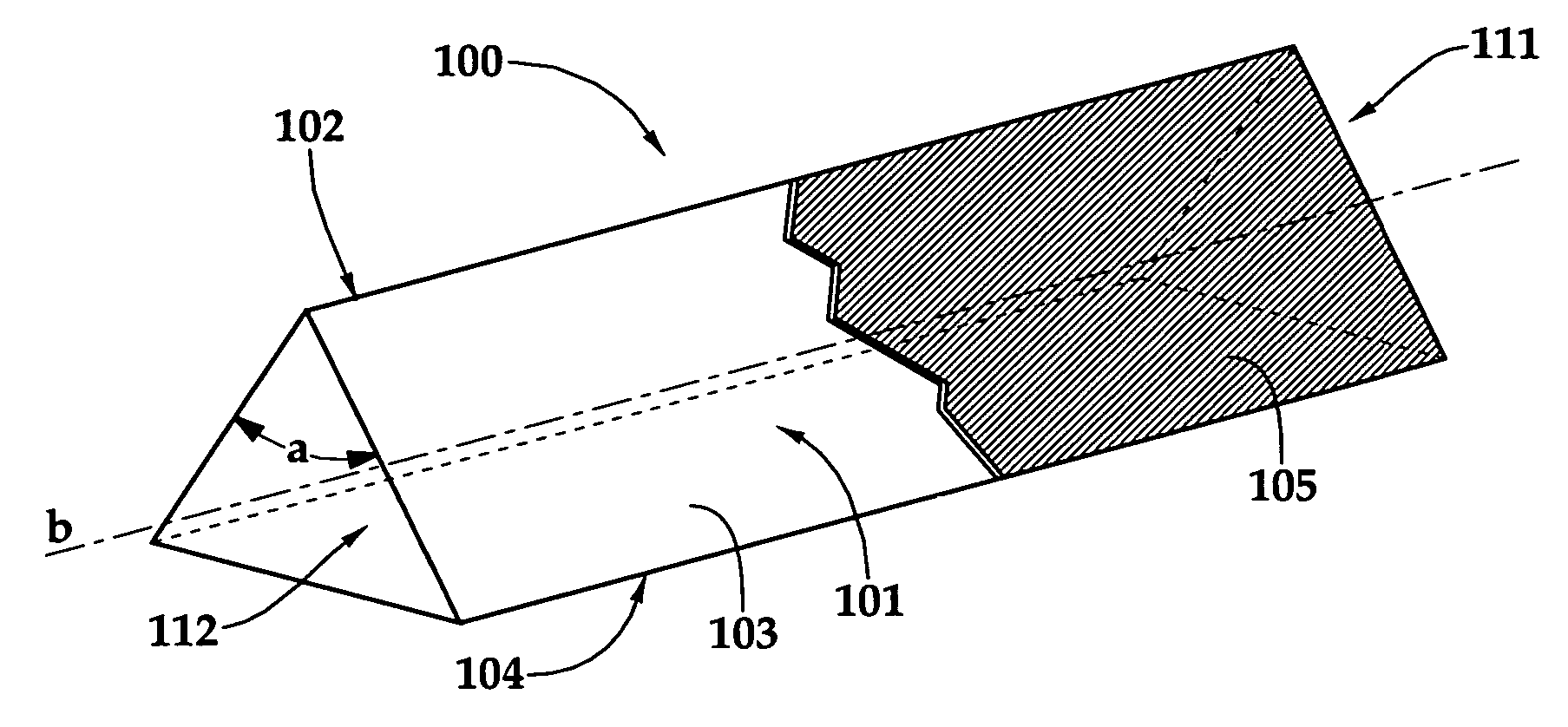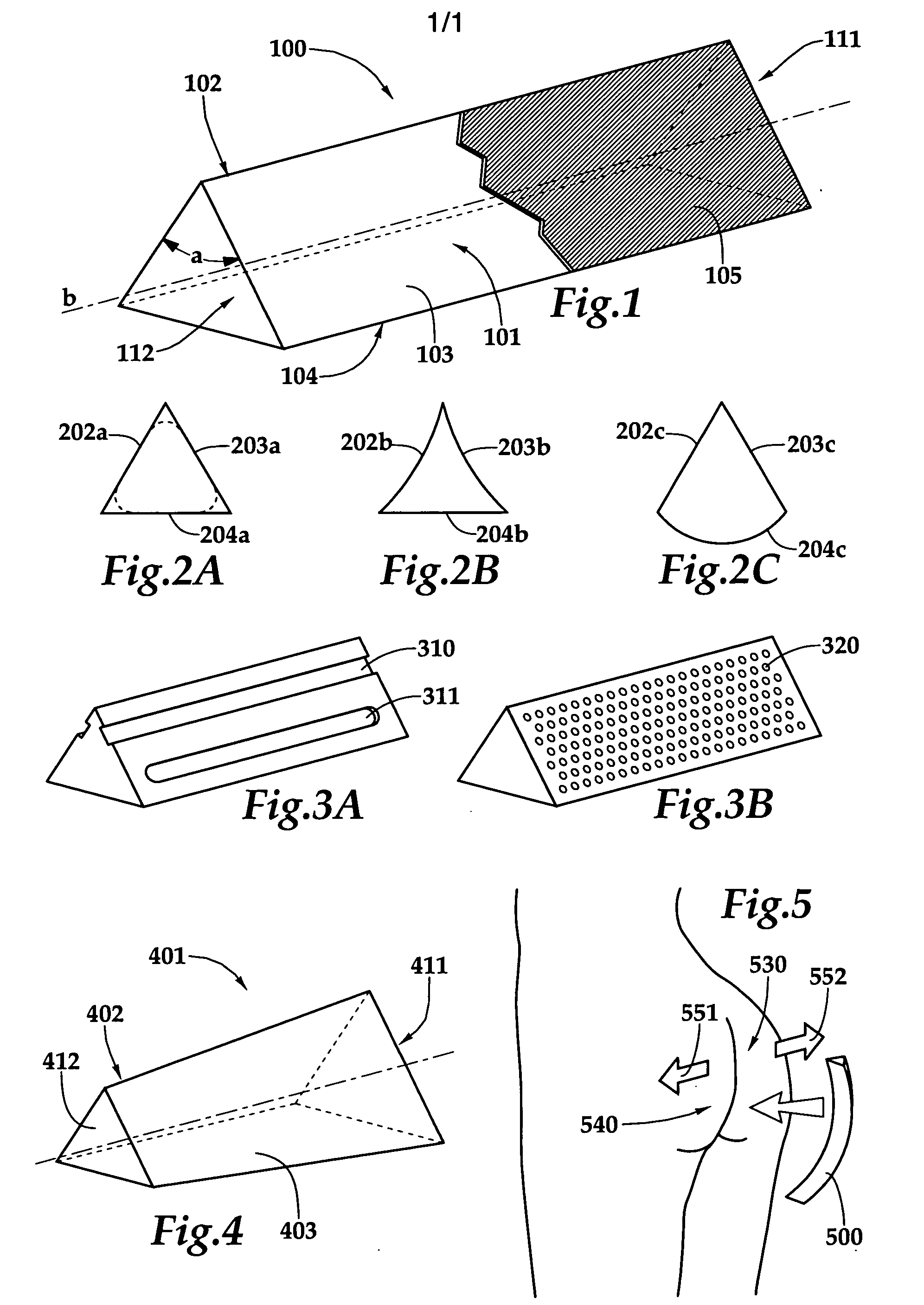Anatomical gluteal cleft medical dressing
a gluteal cleft and medical dressing technology, applied in the field of medical dressings, can solve the problems of unsuitable post-operative exudates, blood or pus from the surgical site, discharge of stool or mucus, and difficulty in comfortably positioning and secureing a dressing in the surgical si
- Summary
- Abstract
- Description
- Claims
- Application Information
AI Technical Summary
Benefits of technology
Problems solved by technology
Method used
Image
Examples
Embodiment Construction
[0017] Referring to FIG. 1, illustrated is a first exemplary anatomical gluteal cleft medical dressing 100. The medical dressing 100 is formed by a foam member 101 having a substantially angular cross-sectional profile (designated “a”) along a central, or longitudinal, axis (designated “b”) thereof; in this embodiment, the central axis passes through the center of first and second ends 111, 112, and the angular cross-sectional profile is perpendicular to the central axis. In general, the angular cross-sectional profile is defined by first and second longitudinal faces 102, 103 of foam member 101; the angle “a” between the first and second longitudinal faces, or “inner” faces, is selected such that the medical dressing 100 can be disposed within a gluteal cleft with the faces 102, 103 intermediate to, and proximate, the first and second cheeks of a human buttocks. In a preferred embodiment, the foam member 101 is flexible about the central axis, whereby it can flex to conform to the ...
PUM
 Login to View More
Login to View More Abstract
Description
Claims
Application Information
 Login to View More
Login to View More - R&D
- Intellectual Property
- Life Sciences
- Materials
- Tech Scout
- Unparalleled Data Quality
- Higher Quality Content
- 60% Fewer Hallucinations
Browse by: Latest US Patents, China's latest patents, Technical Efficacy Thesaurus, Application Domain, Technology Topic, Popular Technical Reports.
© 2025 PatSnap. All rights reserved.Legal|Privacy policy|Modern Slavery Act Transparency Statement|Sitemap|About US| Contact US: help@patsnap.com


